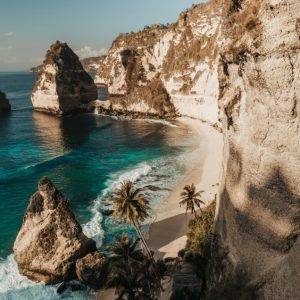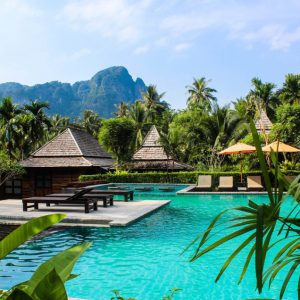
Got questions?
We've got answers! Explore our FAQ page for everything you need to know.
KUGTI PASS TREK
So, the Kugti Pass trek is this awesome high-altitude trek in the Pir Panjal range of the Indian Himalayas. It connects the Bharmour region of Himachal Pradesh with the Lahaul Valley. Pretty cool, right?
It’s considered to be quite challenging. Why, you ask? Well, for starters, you’ll be trekking at a high altitude of around 5,050 meters. And let’s not forget about the rugged terrain. So, you gotta be in good shape and have some prior trekking experience under your belt.
If you’re wondering when’s the best time to give this trek a shot, listen up. Mid-June to September is the sweet spot. That’s when the weather is relatively stable and the pass is usually snow-free. Trust me, you don’t wanna be dealing with snow on this adventure.
Well, typically, you’re looking at around 6-8 days, depending on the itinerary you choose and how fast your trekking group moves.
Alright, let’s talk logistics. The trek usually kicks off from Bharmour, a town in the Chamba district of Himachal Pradesh, India. So, that’s your starting point.
Okay, here’s the deal. You can totally attempt this trek on your own if you’re an experienced trekker. But, let me give you some advice. The terrain is pretty remote and challenging, so it’s a good idea to hire a guide. They’ll help you navigate and make sure you don’t get lost in the wilderness.
Now, let’s talk about where you’re gonna crash at night. Along the trekking route, you’ll be camping in tents. It’s all part of the adventure. But hey, if you prefer a roof over your head, there are basic guesthouses and homestays in some villages along the way. Take your pick!
Now, let’s talk about the highlights of this trek. there are some amazing things to see. Prepare to be blown away by the stunning views of the Himalayan peaks. And the flora and fauna? So diverse and beautiful. Plus, you’ll get to visit remote villages and experience their unique charm. And of course, the cherry on top is the challenging ascent and descent of Kugti Pass itself. It’s gonna be a wild ride, my friend.
Now, permits. Yeah, you’re gonna need those. Make sure you get permits from the local authorities in Bharmour before you hit the trail. And hey, permit requirements can change, so keep an eye on the latest info.Imperial adventure got your back we have permits included in our treks
Kashmir
Kashmir has some absolutely stunning destinations that you shouldn’t miss. Check out Srinagar, where you can enjoy the beautiful Dal Lake and Mughal Gardens. Gulmarg is famous for skiing and gondola rides, while Pahalgam offers scenic valleys and great trekking opportunities. And if you’re into breathtaking glaciers and lakes, Sonamarg is the place to go.
A: The best time to visit Kashmir is during the summer months, from April to June. The weather is pleasant and perfect for sightseeing and outdoor activities. If you’re a fan of skiing or want to experience snowfall, winter (December to February) is the ideal time to visit Gulmarg.
A: Getting to Kashmir is pretty straightforward. You can hop on a flight to Srinagar International Airport, which is well-connected to major cities in India. If you prefer a road trip, you can drive from Jammu. Another option is to take a scenic train journey to Udhampur or Jammu Tawi and then continue by road.
There’s no shortage of things to do in Kashmir! You can enjoy relaxing shikara rides on Dal Lake, explore the ancient Mughal gardens, go trekking in the beautiful Himalayan foothills, or try your hand at skiing or snowboarding in Gulmarg. Don’t forget to indulge in the delicious Kashmiri cuisine and check out the local handicrafts while immersing yourself in the rich culture.
Yes, there are a few cultural considerations to keep in mind when visiting Kashmir. The region has a rich cultural heritage influenced by Islam and Hinduism. It’s important to respect local customs and dress modestly, especially when visiting religious sites or rural areas. Additionally, it’s polite to seek permission before taking photographs of the locals.
A: Kashmir offers a variety of accommodation options to suit every budget and preference. You’ll find luxury hotels and houseboats on Dal Lake, as well as budget-friendly guesthouses and homestays in different towns and villages. It’s always a good idea to book your accommodations in advance, especially during peak tourist seasons.
A: Pack according to the season you plan to visit. In the summer, lightweight clothing is suitable, along with a light jacket for cooler evenings. If you’re traveling in winter, make sure to pack warm clothing, including thermals, gloves, and a heavy jacket to keep you cozy in the cold temperatures and snow.
A: While Kashmir is generally safe for tourists, it’s always a good idea to stay informed about the local situation. Keep an eye out for any travel advisories issued by your government and respect local customs. It’s also wise to avoid political demonstrations or sensitive areas to ensure a smooth and enjoyable trip.
Lahaul and Spiti
Wondering when’s the best time to visit Lahaul and Spiti? Well, from mid-June to September is the perfect period. The weather is pleasant, and the roads are easily accessible. But hey, be warned that winters (October to May) can get super chilly with heavy snowfall, which can make many areas off-limits.
Now, let’s talk about how you can reach Lahaul and Spiti. The most popular route is by road from Manali through the famous Manali-Leh Highway (NH 3). Another option is coming from Shimla via the Hindustan-Tibet Road. If you prefer flying, the nearest airports are in Bhuntar (near Kullu) and Leh (for Spiti).
Must-visit places include Key Monastery (one of the largest and oldest monasteries in Spiti), Chandratal Lake (a stunning high-altitude lake), Kunzum Pass (at 4,590 meters, offering breathtaking views), and the villages of Kaza, Tabo, and Keylong.
Visitors can indulge in trekking to high-altitude lakes like Chandratal and Dhankar Lake, visit ancient monasteries, explore traditional villages, experience local culture and cuisine, and enjoy scenic drives through the Himalayas.
Now, let’s address altitude sickness concerns. Since Lahaul and Spiti have high-altitude regions, it’s important to acclimatize properly. Stay hydrated, take it easy upon arrival, and avoid strenuous activities. And hey, if you’re worried about altitude sickness, it’s always a good idea to consult a doctor beforehand.
Himachal pradesh
If you’re heading to Himachal Pradesh, make sure to check out these must-visit attractions: the Ridge and Mall Road in Shimla, the Hadimba Temple in Manali, the Tsuglagkhang Complex in Dharamshala, the breathtaking Rohtang Pass near Manali, and the serene Tibetan monasteries in Spiti Valley.
Himachal Pradesh is a paradise for adventure seekers! You can go trekking in the mighty Himalayas, like the famous Hampta Pass trek. If you’re into adrenaline-pumping experiences, try paragliding in the thrilling Bir-Billing area or go river rafting in the gushing Beas River. For snow lovers, Solang Valley offers fantastic skiing opportunities. And if you want to explore off the beaten path, Kinnaur and Lahaul-Spiti have some incredible trails waiting for you.
Absolutely! Himachal Pradesh is generally a safe place for tourists. Just like anywhere else, it’s always good to take some standard precautions. Avoid wandering around isolated areas at night, respect the local customs and traditions, and make sure to check the weather conditions before you head out for any treks or outdoor activities.
Prepare your taste buds for a treat! Himachali cuisine is hearty and delicious, with influences from the mountainous terrain. You must try the famous Dham, a festive meal that will leave you wanting more. Another local specialty is Siddu, a mouthwatering steamed bread. Don’t miss out on Chana Madra, which is chickpeas cooked in a flavorful yogurt gravy, or the tasty Kaale Chane ka Khatta, a black chickpea curry. And when it comes to fruits, apples and cherries are the real stars here!
Absolutely! Himachal Pradesh knows how to celebrate! Throughout the year, you’ll have the chance to experience several vibrant cultural festivals. The Shimla Summer Festival is a must-attend, showcasing the rich heritage of the region. Kullu Dussehra is another highlight, filled with colorful processions and traditional dances. If you visit during winter, don’t miss the Manali Winter Carnival, a lively event with music, dance, and winter sports. And for a taste of Tibetan culture, the Losar Festival in Dharamshala, which marks the Tibetan New Year, is an absolute must-see.
Can’t find what you are looking for?
IMPERIAL ADVENTURE
TREKKING & TOURISM
- © Copyright 2019 Imperial Adventure Trekking and Tourism







